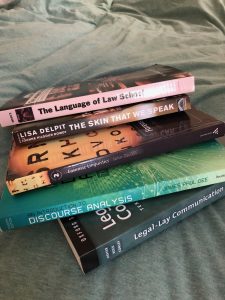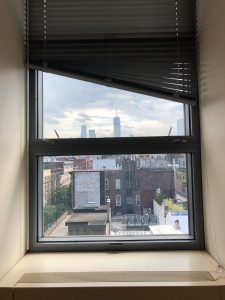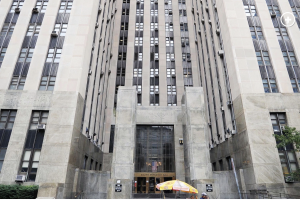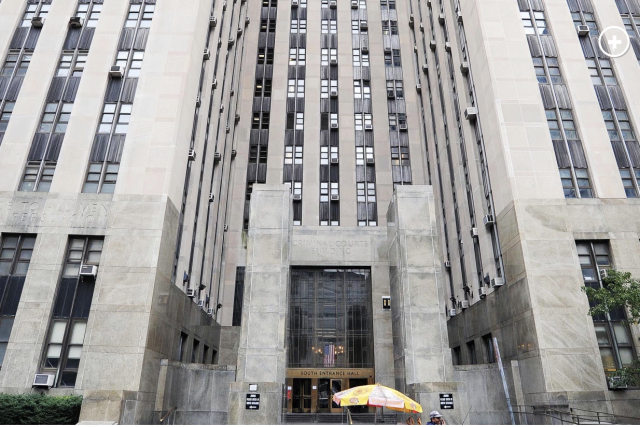My study examines the linguistic aspects of arraignment in Manhattan Criminal Court. I am particularly interested in the use of specialized language or jargon, how context affects speaking style, and what is considered legitimate language in a courtroom setting. All of these questions stem from a concern with the accessibility of language used in court proceedings, and curiosity about how language can express power dynamics in institutionalized, ritualized settings. While I wait for IRB approval to begin my field work in Manhattan arraignment court, I have been reviewing other work that analyses language in a legal setting, and reviewing texts on discourse analysis, which has been providing interesting insight into how I can dissect the data I will collect.

One of the main reasons that I find legal language to be a compelling subject of study is that it involves direct speech acts. That is, when saying something brings that thing into being. A common example that James Gee cites is when a judge declares two people to be married. The statement, “I pronounce you man and wife,” actually brings the marriage into being. Of course, the stakes can be considerably raised when considering other aspects of the legal system. In a trial, a defendant’s plea is not an ephemeral word, but defines the course of a trial. The verdict a jury reaches, likewise, becomes very real in its effect on the defendant’s life.

Arraignment is the first time that those who have been arrested appear in court. Often, people who are arrested remain in police custody from the time of their arrest until their arraignment in court. It is when they are formally charged, and the first opportunity that they have to enter a plea. The outcome of arraignment determines bail and can result in orders of protection, rescission of a license, and travel limitations. The main participants in an arraignment are the defendant, the defense attorney, a prosecutor, a judge, and sometimes a translator, of which my study is primarily focused on the judge, prosecutor, and defense attorney in this setting. The accessibility (or inaccessibility) of the language used during an arraignment risks obscure the proceedings from the person whom they most profoundly affect, the defendant, so I believe that looking critically at the communication used during this proceeding is vital. I expect my IRB to be approved any day now, and when that occurs, I will be able to begin collecting my data from observing arraignments in Manhattan.

